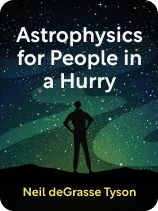

This article is an excerpt from the Shortform book guide to "Astrophysics for People in a Hurry" by Neil de Grasse Tyson. Shortform has the world's best summaries and analyses of books you should be reading.
Like this article? Sign up for a free trial here.
What are dark matter and dark energy? Do our current theories of physics need to be reworked to account for them?
Since humans first looked up, we’ve wondered about our place in the cosmos, yet everything we’ve learned has shown that our ignorance still outstrips our knowledge. Neil deGrasse Tyson explores two of these areas of mystery: dark matter and dark energy.
Read more to find out what we do and don’t know about these scientific frontiers.
Dark Matter and Dark Energy
In addition to expanding what we know about the universe, our deep space observations also reveal that there are major gaps in our understanding of the cosmos. Dark matter and dark energy are two of these gaps. What are dark matter and dark energy? Let’s take a look at what we know about these mysteries.
Dark Matter
There appears to be far more gravity in the universe than all the matter we observe can account for. This is the “dark matter” problem. Dark matter’s effects have been known for nearly a century. But, to date, we can tell only what it is not, though our observations of the early universe give some tantalizing clues.
85% of the gravitational attraction we measure on the cosmic scale seems to come from invisible sources.
To be clear, we don’t know what dark matter is, or even if it’s a form of matter at all. The name “dark matter” is merely a placeholder for something we know is there only because of its effects on what we see. It’s not a bunch of undiscovered black holes; we’d be able to detect them via x-ray emissions. It isn’t massive dark clouds in space; we’d see them blocking the light from behind them. It can’t be planets or asteroids; they’d have to take up six times more mass than stars, which Tyson says is exceedingly unlikely. What’s most confusing is that we observe dark matter’s effects only on the largest scale, not on the motion of stars and planets.
We know that dark matter doesn’t fuse with hydrogen and helium. Our best guess is that dark matter consists of an undiscovered type of particle that interacts with others via only gravity, ignoring the other three fundamental forces. Whatever it is, dark matter’s effects show that the so-called “normal” matter we know is only the tip of the universal iceberg.
Dark Energy
As mysterious as dark matter is, it isn’t the biggest puzzle in cosmology. In recent decades, astronomers have witnessed a mysterious force they’ve named “dark energy” that’s accelerating the universe’s expansion. At the moment, we’re ignorant of its true nature.
Tyson traces dark energy’s theoretical roots back to a concept that Einstein thought was a mistake in his equations. When Einstein developed general relativity, no one knew that the universe was expanding. To explain why the universe wasn’t collapsing under its own gravity, Einstein included a value in his formulae that he called the “cosmological constant.” It was a placeholder for an unknown force that pushed against the pull of gravity.
By the end of the 20th century, astronomers had established that the universe is expanding faster than it should be. Now it’s clear that, not only will the expansion continue, but somehow it’s also accelerating.
No one understands where the energy comes from that drives the galaxies farther apart, but Tyson writes that there’s already a place for it in relativity’s equations—Einstein’s cosmological constant, which astrophysicists now refer to as “dark energy.”
Even more so than dark matter, Tyson reiterates that we don’t have a clue what dark energy is. However, current estimates suggest that dark energy makes up almost 70% of the universe, with dark matter taking up a little more than 25%, and the regular matter and energy we know of comprising a mere 5% of the observable cosmos.
The Current Frontier
Do the existence of dark matter and dark energy mean that our current theories of physics need an overhaul? Perhaps. Tyson posits some current theories: Dark matter could be the gravitational effect of objects in some other dimension. Dark energy could be the result of the spontaneous creation and destruction of subatomic particles in empty space. Whatever the answers turn out to be, not knowing is a place where we’ve found ourselves before.
There was a time before we understood fusion, when scientists couldn’t explain how the sun produced light. There was a time before we understood light, and scientists believed it traveled through an invisible medium called “aether.” There was a time when we thought we were the center of creation, and the stars in the sky were just pretty, twinkling lights. Tyson reminds us that climbing out of ignorance is an adventure and that there will always be something new to discover.
| An Age of Discovery Though it’s unlikely we’ll ever explore the stars in the same way as on Star Trek, the modern age has been a gold rush of space exploration. There have been many exciting advances in what we’ve learned about the cosmos. We’ve discovered ice on the surface of the Moon and taken samples of organic material from a comet. We’ve landed a probe on Saturn’s moon Titan and flown a spacecraft past distant, icy Pluto. The Kepler Space Telescope has identified more than 2,600 planets outside our solar system, while astronomers using the Event Horizon Telescope took the first picture of a black hole. At present, there are plans to return to the moon, bring back soil samples from Mars, and take the first direct photographs of planets outside our solar system. However, as Isaac Asimov once said, the most exciting phrase in science isn’t “Eureka!” but “That’s funny.” While it’s guaranteed that we’ll keep making discoveries about the universe, the ones that will truly overturn our ways of thinking are the ones we’ll never see coming. |

———End of Preview———
Like what you just read? Read the rest of the world's best book summary and analysis of Neil de Grasse Tyson's "Astrophysics for People in a Hurry" at Shortform.
Here's what you'll find in our full Astrophysics for People in a Hurry summary:
- Neil deGrasse Tyson's simple explanations of some of the mysteries of the cosmos
- Why everyone should understand where we fit in the universal scheme
- Why humans need to climb off their pedestals





